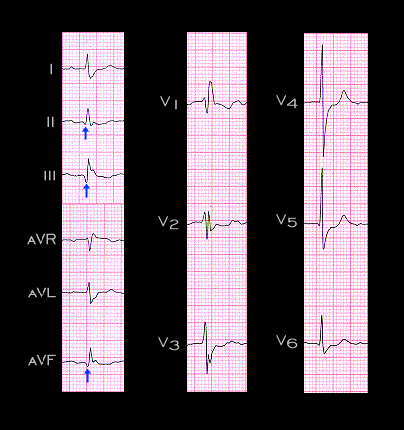
This ECG is from a 74 year old patient with a history of a prior inferior wall infarction and right bundle branch block. The right bundle branch block is responsible for the widened S wave in leads I, aVL V5 and V6 and the R’ in leads aVR, V1 and V2. The prior inferior wall infarction is responsible for the Q waves in leads II, III and aVF (blue arrows).
